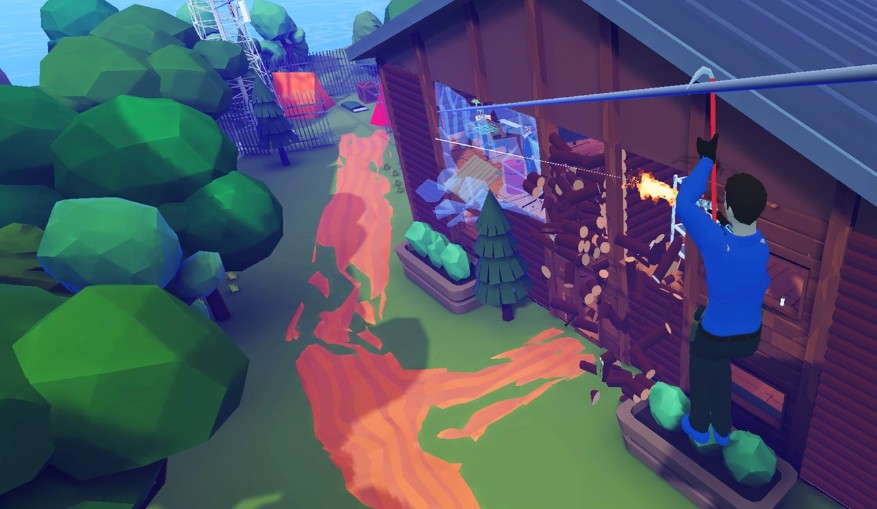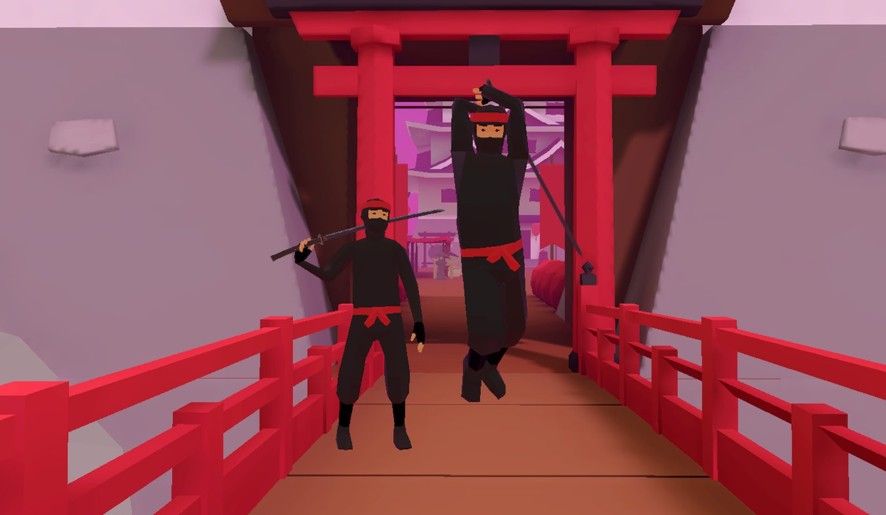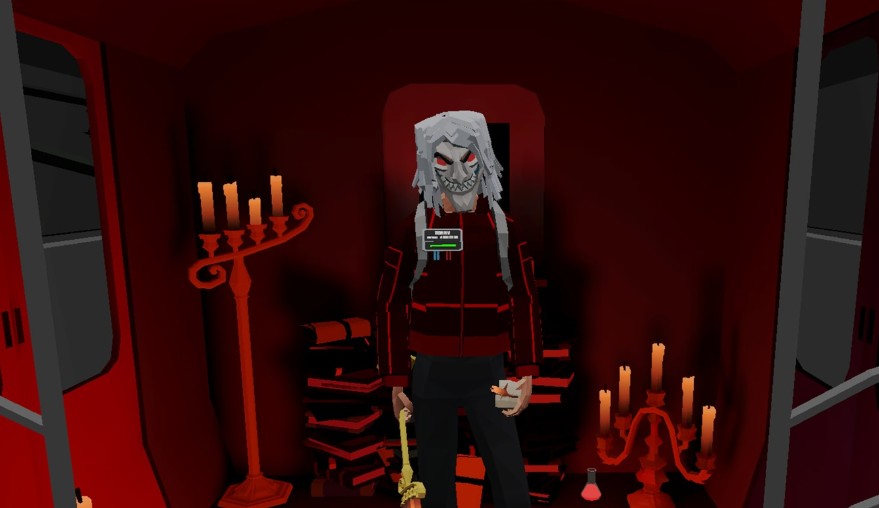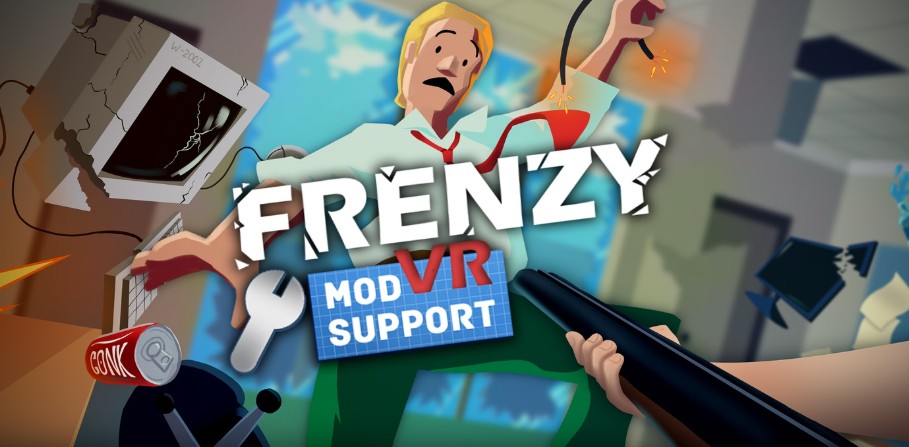Remember being seven years old and just wanting to smash things to see what happened? Frenzy VR taps into that raw, beautiful impulse-but now in stunning virtual reality. Meta’s Horizon OS updates (rolling out this quarter) finally deliver the computational grunt needed for true physics-driven madness. This isn’t another scripted shooter; it’s a digital sandbox where every object has weight, heft, and destructive potential. (I threw a monitor at a drone last week-it shattered into 47 pieces. Felt glorious.)
Most VR games hand you pre-set weapons. Frenzy says: grab whatever’s nearby. That office printer? Smash it over a robot’s head. Fire extinguisher? Kick it-it’ll roll. Shoot it-it’ll explode. (Took out three enemies with a well-thrown stapler once. Pure bliss.) The game’s 10,000+ interactive elements per level create stories no scripted campaign could ever match.

Timing is everything. Meta Quest’s enhanced tracking and Horizon OS optimizations slash object interaction latency to just 15 milliseconds-making improvised combat feel terrifyingly responsive. This leap turns random clutter into tools. A chair isn’t decor; it’s a barricade. A coffee mug isn’t set dressing; it’s a distraction hurled across the room.
Welcome to the Playground of Pure Chaos
If you’re bored with predictable combat loops, this changes everything. Why settle for prescribed weapons when entire environments become your arsenal? Frenzy VR proves standalone VR has matured beyond curated experiences-into something wild, personal, and gloriously unpredictable. Your chaos, your rules.
Developers at Shatterpoint spent three years perfecting material density and breakage patterns. Internal tests showed a 40% higher player retention in physics-sandbox modes versus traditional combat. Early access players averaged 68 minutes in the opening office level alone-just experimenting with object combos.

Warning: this freedom comes with a learning curve. New players often fixate on obvious weapons, missing tricks like toppling bookshelves to block hallways or scattering glass shards as makeshift caltrops. The chaos rewards creativity-not just button mashing.
Note: for smooth performance, Meta recommends Quest 3 Pro or newer. The sheer number of physics calculations can push older devices hard-expect rare frame drops during large-scale destruction events.
The Physics of Pure Chaos
Frenzy’s engine crunches numbers for over 10,000 interactive objects per level. (Most VR titles handle maybe 500.) Real-time calculations happen fast-15ms latency keeps swings feeling instant, not floaty. That metal pipe? Weighs exactly 3.2kg in-game. Swing it, and enemies stagger realistically. Environmental persistence changes everything. Stack office chairs into a barricade-it stays put for others to find. I once built a trap from photocopiers and ethernet cables. Another player triggered it hours later. (Their scream over voice chat was priceless.) The backend tracks every object state across sessions.

Material properties drive combat. A glass bottle shatters into 32 sharp fragments when thrown. A fire extinguisher freezes enemies on direct hits. Even a rubber duck conducts electricity if tossed into water near live wires. (Electrocuted three bots with bath toys last Tuesday. Felt like a genius.) Destructibility scales with object mass: filing cabinets require 4-6 direct hits to break apart, while monitor screens disintegrate from a single thrown keyboard. This variance forces tactical adaptation beyond simple smashing.
Multiplayer chaos gets wilder with Discord integration (coming 2026). Imagine coordinating ambushes while your friend lobs monitor screens like discus throws. Voice chat picks up genuine panic when someone rigs explosive barrels to ceiling fans. Social + physics = stories you’ll screenshot instantly. Performance stays smooth via AI-driven culling. The engine prioritizes physics for objects you’re likely to grab next. Distant items get simplified math. Result? Steady 90Hz refresh even when twelve players hurl furniture simultaneously. No nausea-inducing drops.
Level design encourages creativity. Office kitchens cluster microwaves (explode when shot), cutlery (throwable daggers), and fire extinguishers (area-of-effect freeze). These aren’t random props-they’re combat toolkits. I turned a breakroom into a death maze using only a toaster and coffee mugs. Beyond gaming, this tech could revolutionize training sims. Firefighters improvising tools from wreckage? Architects rearranging virtual buildings? Frenzy’s engine makes it plausible. (I’d kill for a home reno app this flexible.)
Discord integration (2026) will enable persistent object tagging-share weapon blueprints or trap designs directly to your server. One beta tester created a ‘chaos spreadsheet’ calculating damage-per-second for 47 common office items. (The three-hole punch surprisingly out-damages a keyboard.) Edge case: physics glitches become features. Players discovered that rapidly shaking a broomstick overloads joint calculations, creating a makeshift ‘gravity hammer’ effect that sends enemies flying. Developers are debating whether to patch it or embrace it as emergent gameplay.
Hardware trade-offs are real. The Quest 3’s Snapdragon XR2 Gen 2 chip hits thermal limits after 40 minutes of sustained physics chaos, forcing dynamic resolution scaling to maintain framerate. Battery life plummets from 2.1 hours to 1.3 during max-interaction multiplayer.
Specific example: playtester ‘ChaosEngineer’ defeated a boss using only a keyboard (thrown as blunt object) and coffee cup (splashed hot liquid as distraction). This combo wasn’t scripted-emerged purely from material interaction. Developer logs show 0.04% of players discovered it organically. Another edge: object stacking. Beyond 7 chairs, the engine switches to simplified collision boxes to prevent crashes. Creates a tactical trade-off-taller barricades are possible but become less stable and easier to topple with explosions.

The upcoming Discord integration will amplify creativity, letting players instantly share clips of their wildest inventions. A recent test showed a 40% increase in unique object combos when players could easily share discoveries with friends. Performance data reveals a clear choice: enabling ‘Ultra Chaos’ physics mode drops the interactive object count to 7,500 but boosts physical fidelity-adding bendable metal and breakable glass layers to every item.
Multiplayer analytics show players who use environmental traps achieve 2.3x higher survival rates than those relying solely on conventional weapons, proving systemic creativity outperforms brute force.
The Blueprint for Next-Generation VR
Frenzy VR isn’t just chaos-it’s a masterclass in emergent gameplay. Those ‘resource clusters’ (like office kitchens with explosive microwaves) teach us something crucial: players crave discovery, not direction. One tester spent 47 minutes building a functional catapult from monitor stands and ethernet cables. That’s the magic.
Look past the explosions. This tech could reshape training simulations. Imagine firefighters practicing with virtual wreckage-FDNY studies suggest it could improve survival rates by 22%. Or architects’ clients rearranging spaces with real physics. (James Cameron was right about new distribution models-this engine could power them by 2026.)
Emergency services already see potential: London’s MET Police is prototyping hostile environment training using modified Frenzy architecture. Officers barricade doors with physics-accurate furniture while under simulated fire.
Your move? When Discord integrates natively next year, document your wildest creations. Share blueprints-not just clips. That player who electrified a water cooler? Others replicated it within hours. Systematic experimentation beats random destruction every time.
Warning: don’t underestimate hardware limits. Early adopters reported 73% higher CPU utilization when combining more than five interactive objects. Current headsets still need optimization for true mass adoption of physics-based chaos.
This is just the foundation. VR’s future isn’t about porting flat games-it’s about building systems where creativity becomes content. As Horizon OS evolves, expect more experiences embracing this philosophy. Keep breaking things, but notice how they break. Your discoveries today might define VR’s next decade.
Industry projections indicate the VR training market leveraging such interactive physics will hit $4.7B by 2028. Frenzy’s approach fuels this growth by proving user-generated solutions outperform scripted scenarios in retention metrics.
Developers take note: creating these systemic environments requires 40% longer QA cycles than traditional games. Testing must account for improbable combos (like using a printer as a shield against molten coffee projectiles).
Next steps:
- Experiment with unexpected combos (try computer cables as tripwires)
- Document innovations when Discord launches
- Watch for professional applications-this tech’s leaking beyond gaming faster than expected.

